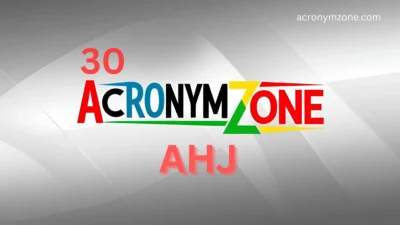The acronym CPM can mean different things depending on the industry—most commonly:
- Cost Per Mille (marketing/advertising) – cost per 1,000 impressions
- Critical Path Method (project management) – a scheduling technique
- Certified Practicing Midwife (healthcare, especially in Australia)
- Counts Per Minute (radiology, laboratory work, or physics)
For this guide, we’ll focus on the two most commonly used meanings:
- Cost Per Mille in advertising/digital marketing
- Critical Path Method in project and construction management
Then we’ll provide 30 contextual alternatives with brief examples, plus guidance on how to choose the best term based on tone, clarity, and audience.
💸 CPM in Marketing: Cost Per Mille
CPM (Cost Per Mille) is a pricing model where advertisers pay for 1,000 impressions (views of an ad). It’s used heavily in digital ads, display campaigns, and media buying.
🏗️ CPM in Project Management: Critical Path Method
CPM (Critical Path Method) is a project management technique that identifies the longest sequence of dependent tasks that determine the minimum project duration. It’s used to plan, schedule, and manage timelines.
🧠 30 Alternatives to CPM (Split by Use Case)
🔹 CPM – Cost Per Mille (Marketing Focus)
1. Cost Per Thousand
Use for: Clarity with non-marketing folks.
Example: We’re running this ad at a cost per thousand of $12.
2. Impression-Based Pricing
Use for: Simplifying ad structure to clients.
Example: This campaign uses impression-based pricing.
3. CPV (Cost Per View)
Use for: Video ads, YouTube campaigns.
Example: On YouTube, we use CPV instead of CPM.
4. Digital Ad Rate
Use for: General client-friendly language.
Example: Our digital ad rate is higher during the holidays.
5. Display Ad Fee
Use for: Describing banner or image-based ads.
Example: The display ad fee depends on impressions.
6. Media Buying Rate
Use for: Agency presentations or pitch decks.
Example: The media buying rate varies by network.
7. Programmatic Pricing
Use for: Automated advertising channels.
Example: CPMs fluctuate with programmatic pricing.
8. Audience-Based Rate
Use for: Targeted campaigns.
Example: The audience-based rate is higher for Gen Z segments.
9. Reach-Based Cost
Use for: Discussions about audience size.
Example: CPM is a reach-based cost structure.
10. Ad Impression Cost
Use for: Straightforward breakdown.
Example: The ad impression cost for this campaign is $10.
🔸 CPM – Critical Path Method (Project Management Focus)
11. Project Timeline Strategy
Use for: General audiences.
Example: We’re revising the project timeline strategy.
12. Scheduling Model
Use for: Describing technical planning tools.
Example: This scheduling model helps avoid bottlenecks.
13. Task Sequence Mapping
Use for: Explaining to clients.
Example: Task sequence mapping shows dependencies.
14. Project Workflow Plan
Use for: Clearer language in team meetings.
Example: We need to rework the project workflow plan.
15. Timeline Optimization
Use for: Executive summaries.
Example: CPM helps with timeline optimization.
16. Milestone Method
Use for: When focusing on deliverables.
Example: The milestone method keeps us on schedule.
17. Dependency Chart
Use for: Visual planning tools.
Example: Let’s build a dependency chart to clarify priorities.
18. Time-Critical Planning
Use for: Urgent projects.
Example: We’re using time-critical planning for this sprint.
19. Critical Task Path
Use for: Simplified version of CPM.
Example: If the critical task path slips, we miss the deadline.
20. Project Logic Model
Use for: Grant writing or structured planning.
Example: The project logic model outlines key actions.
⚙️ Neutral/Universal Alternatives for Either Context
These work in broader discussions, regardless of whether you’re talking ads or timelines.
21. Performance Metric
Use for: Referring to CPM as a key measure.
Example: CPM is a performance metric we track weekly.
22. Efficiency Indicator
Use for: Showing impact or value.
Example: It’s a strong efficiency indicator in media spend.
23. Process Benchmark
Use for: Evaluating workflow models.
Example: CPM serves as a process benchmark.
24. Key Rate
Use for: General conversations.
Example: That’s our key rate for large-scale display ads.
25. Cost Metric
Use for: Emphasizing ad spend.
Example: We optimized our cost metric by switching platforms.
26. Planning Methodology
Use for: Referring to scheduling systems.
Example: We use several planning methodologies, including CPM.
27. Execution Model
Use for: Talking project or campaign delivery.
Example: That execution model keeps everything on track.
28. Budget Efficiency Tool
Use for: Media or operations spending.
Example: CPM is a useful budget efficiency tool.
29. Campaign Cost Metric
Use for: Digital marketing reports.
Example: Our campaign cost metric dropped by 20%.
30. Workflow Planner
Use for: Project team meetings.
Example: Our workflow planner is based on CPM.
✅ How to Choose the Right Alternative
| Audience/Field | Best Alternatives | Why It Works |
| Marketing/Clients | Cost Per Thousand, Ad Impression Cost, CPV | Clear and audience-friendly |
| Project Management | Project Timeline Strategy, Critical Task Path | Descriptive for time-sensitive planning |
| Mixed Audiences | Efficiency Indicator, Performance Metric | Flexible and non-technical |
| Executive/Reporting | Budget Efficiency Tool, Campaign Cost Metric | Data-focused and high-level |
🌍 Cultural & Practical Considerations
- In marketing, CPM is often confused with CPC (Cost Per Click) or CPA (Cost Per Acquisition)—so clarity matters.
- In project management, not everyone understands “critical path”—use visual aids or simpler alternatives when possible.
- Be especially mindful in international or cross-functional teams—jargon like “CPM” might need context or translation.
🏁 Final Thoughts:
Whether you’re talking about ad budgets or project schedules, “CPM” is a powerful acronym that deserves the right introduction. Choose your terminology based on clarity, audience, and purpose—and you’ll build stronger communication (and results!).




